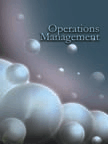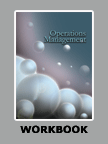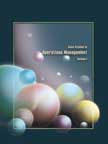PepsiCo's Distribution and Logistics Operations
|
|
ICMR HOME | Case Studies Collection
Case Details:
Case Code : OPER031
Case Length : 12 Pages
Period : 1991 - 2003
Organization : PepsiCo.
Pub Date : 2004
Teaching Note :Not Available
Countries : USA
Industry : Food & Beverages
To download PepsiCo's Distribution and Logistics Operations case study
(Case Code: OPER031) click on the button below, and select the case from the list of available cases:

Price:
For delivery in electronic format: Rs. 400;
For delivery through courier (within India): Rs. 400 +Shipping & Handling Charges extra
» Operations Case Studies
» Case Studies Collection
» ICMR HOME
» View Detailed Pricing Info
» How To Order This Case
» Business Case Studies
» Case Studies by Area
» Case Studies by Industry
» Case Studies by Company 
Please note:
This case study was compiled from published sources, and is intended to be used as a basis for class discussion. It is not intended to illustrate either effective or ineffective handling of a management situation. Nor is it a primary information source.
Chat with us

Please leave your feedback

|
|




<< Previous
Background Note
|
In 1898, Caleb Bradham (Bradham) invented Pepsi-Cola in his pharmacy in North
Carolina, US. Bradham started marketing Pepsi-Cola in 1903 and a year later,
purchased a factory to manufacture and bottle the new drink. Bradham started
bottling his drink in 1904. He quickly developed a system of bottling franchises
for the drinks. By 1909, Bradham had established a network of 250 bottlers for
Pepsi-Cola with operations in 24 states in the US. By 1910, the network had
increased to about 300 Pepsi-Cola bottlers.
Bradham went bankrupt in 1923, after incorrect speculation on sugar prices.
Pepsi-Cola's ownership changed hands several times until Charles Guth (Guth),
who headed Loft Candy Company, bought it in 1931.
|

|
Guth employed aggressive pricing tactics in his efforts to increase
Pepsi-Cola's sales. He doubled Pepsi-Cola's bottle size to 12 ounces for the
same price two years later. He also used Pepsi-Cola syrups in his soda
fountains. By the end of 1934, Pepsi-Cola's profits had increased and the
company started an aggressive campaign to sign up more bottlers to join as
its franchisees. By 1937, Pepsi-Cola was running five concentrate plants and
313 bottlers operating in the US.
|
|
By 1941,
Guth had enfranchised 469 bottlers and began to offer loans to bottlers
to make capital investments. In the same year, Loft Candy Company was
merged into Pepsi-Cola and the merged entity was named Pepsi-Cola
Bottling Company (Pepsi).
In 1949, Pepsi appointed Alfred Steele (Steele), a former Coca-Cola
executive as President. He focused on the areas of quality control,
product research, training programs and commitment to 'partnership' with
Pepsi's bottlers. Steele commented, "Our job was not to sell the bottler
something in the hope that he could sell it, but our true focus was to
help him to move more goods at a profit." |
He told the bottlers, "You can save your way to bankruptcy or
spend your way to prosperity." Under Steele, the profitability of Pepsi's
bottlers improved significantly. In the 1950s, Pepsi focused on modernizing its
bottling operations. Between 1951 and 1957, new equipment (such as carton
openers and electronic units) helped to increase the bottling plants
productivity from 260 to 500 bottles per minute. About 140 new bottling plants
began operations during the 1950s. At the end of the decade, there were nearly
550 Pepsi bottling plants in the US...
Excerpts >>
|
|










